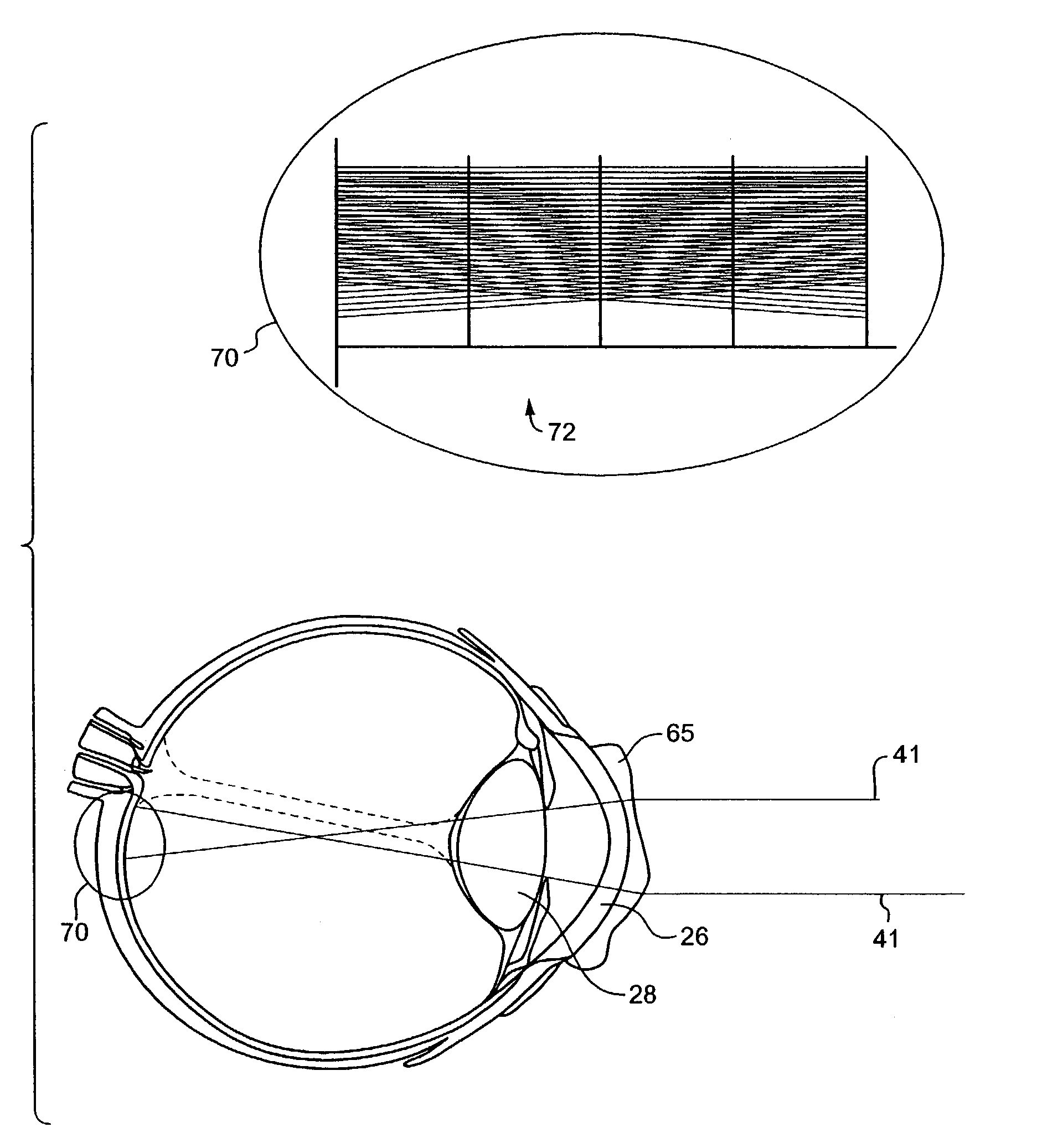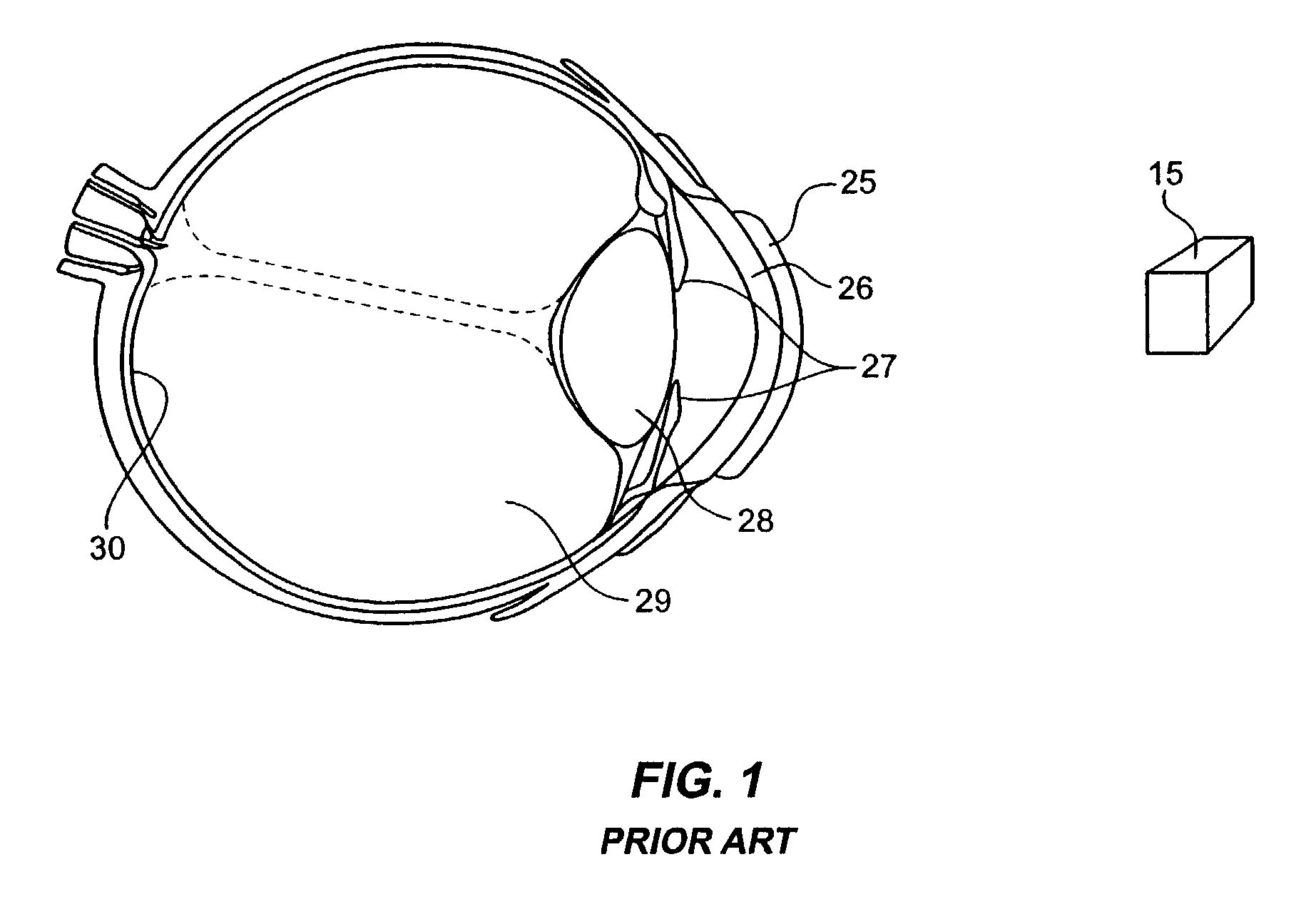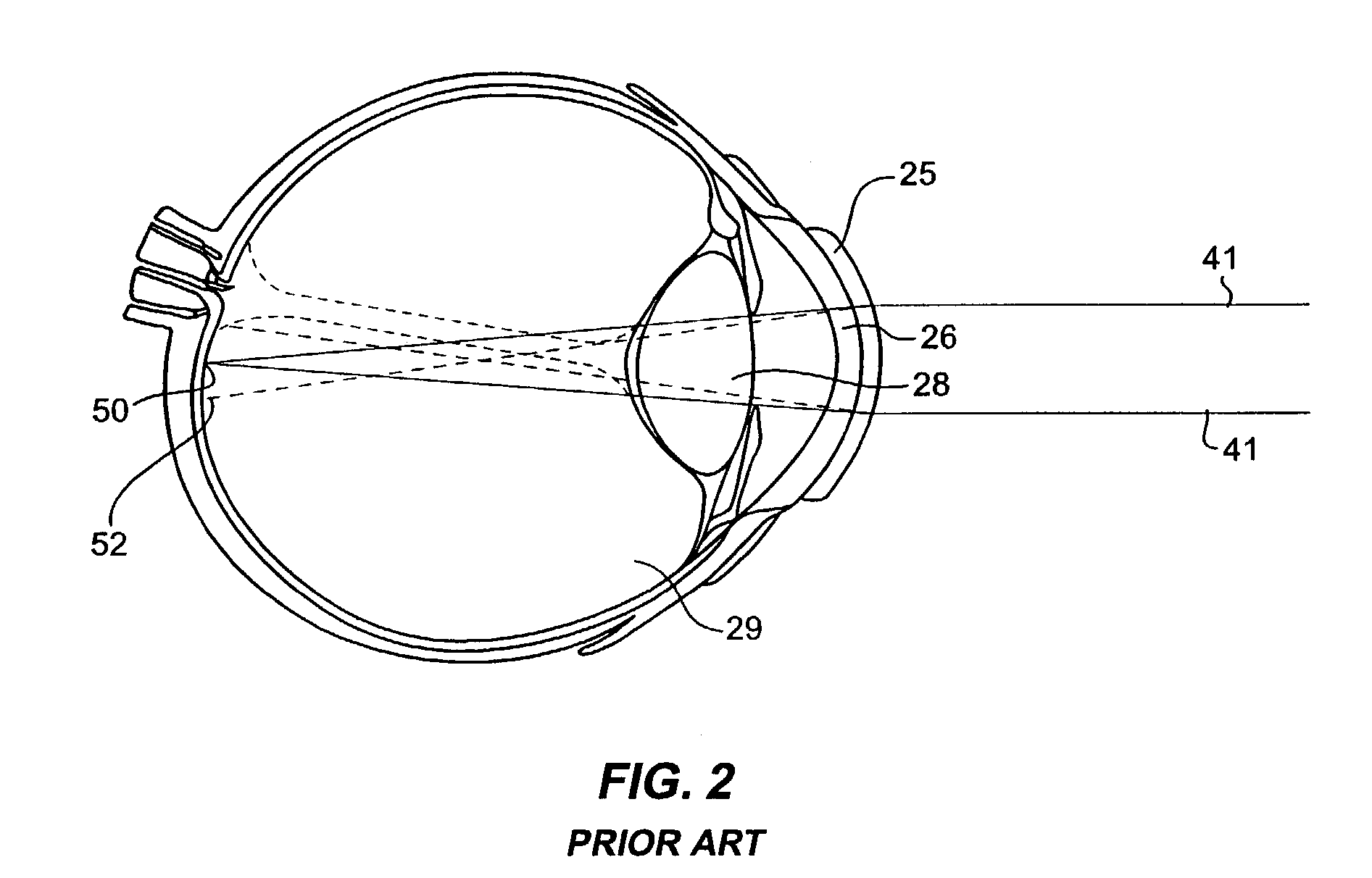Extended depth of field optics for human vision
a technology of optics and depth of field, applied in the field of extended depth of field optics for human vision, can solve the problems of loss of contrast, out-of-focus image, image not aligned, etc., and achieve the effect of increasing the depth of field and prolonging the field
- Summary
- Abstract
- Description
- Claims
- Application Information
AI Technical Summary
Benefits of technology
Problems solved by technology
Method used
Image
Examples
Embodiment Construction
[0019]FIG. 1 (prior art) shows a conventional optical imaging system using a contact lens over an eye. Object 15 is imaged through contact lens 25 through the cornea 26, the iris 27, lens 28, and the vitreous humor 29 onto the retina 30. Such a system creates a sharp, in-focus image at the retina 30 only if object 15 is located at or very close to the in-focus object plane. Some accommodation is provided by the lens 28. However, lens 28 hardens with age and loses its ability to refocus. If the distance from the back principal plane of lens 28 to retina 30 is di, and the focal length of contact lens 25 is f, the distance from the front principal plane of lens 28 to object 15, do must be chosen such that:
[0020]1do+1di-1f=0(Eq.1)
in order for the image at retina 30 to be in adequate focus. The depth of field of an optical system is the distance that the object 15 can move away from the in-focus distance and still have the image be in focus. For a simple system like FIG. 1, the depth of...
PUM
 Login to View More
Login to View More Abstract
Description
Claims
Application Information
 Login to View More
Login to View More - R&D
- Intellectual Property
- Life Sciences
- Materials
- Tech Scout
- Unparalleled Data Quality
- Higher Quality Content
- 60% Fewer Hallucinations
Browse by: Latest US Patents, China's latest patents, Technical Efficacy Thesaurus, Application Domain, Technology Topic, Popular Technical Reports.
© 2025 PatSnap. All rights reserved.Legal|Privacy policy|Modern Slavery Act Transparency Statement|Sitemap|About US| Contact US: help@patsnap.com



